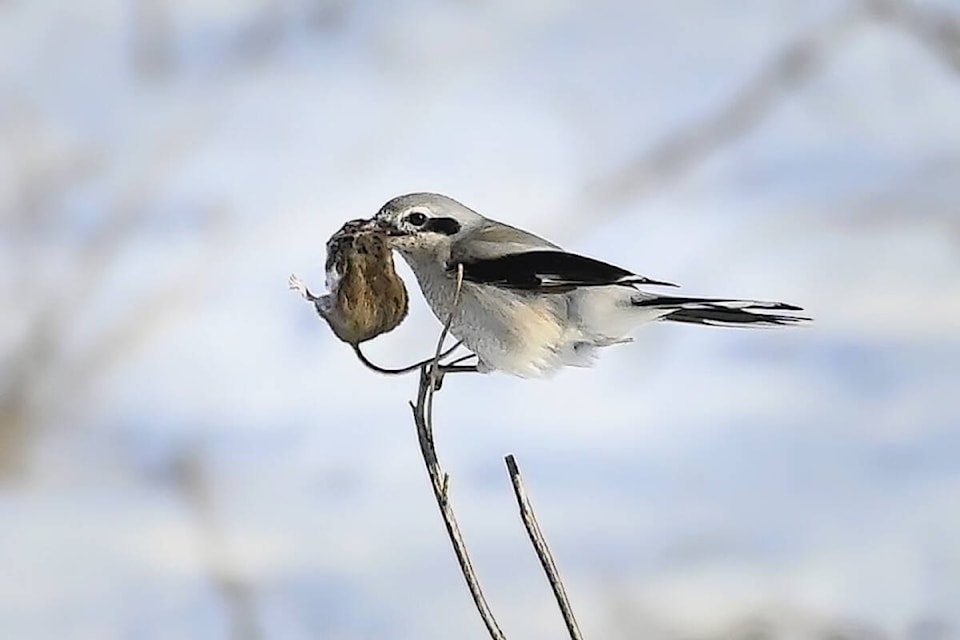By John G. Woods
Contributor
While most of us think of hawks, falcons, eagles and owls as birds of prey, here in the Shuswap we have another raptorial bird, the Northern Shrike.
Shrikes are a type of songbird which specialize in hunting other birds and rodents.
In our area, we regularly see the Northern shrike, a robin-sized songbird that visits us during the autumn, winter and early spring.
Another shrike, the Loggerhead, lives in the southern parts of eastern Canada and across the United States. Loggerhead Shrikes are rarely seen in British Columbia.
As their name suggests, Northern shrikes nest in the northern boreal forests of Canada, Alaska and western Asia. When they are visiting the Shuswap, shrikes hunt the edges of open areas such as the shrubby lake margins on either side of the Salmon Arm wharf.
Local bird-watchers have reported seeing shrikes in Salmon Arm Bay many times this winter, always as single birds perched on the top of a shrub along the lake.
From these hunting perches, shrikes are on the watch for small birds or mammals including mice and voles. Unlike other birds of prey, shrike feet aren’t equipped with strong talons but instead use their bills as formidable weapons. The tip of a shrike’s bill is strongly hooked downward, giving them a firm grasp on their prey.
A tooth-like projection along the cutting-edge of a shrike’s upper bill fits neatly into a corresponding notch in its lower bill.
This deadly combination allows them to seize prey by the neck and subdue it with a single bite. Falcons such as Peregrine falcons, merlins and American kestrels have the same adaptation for their bird of prey lifestyle.
Shrikes use their feet to grasp the lifeless prey while flying to the safety of a dense thicket. Extremely capable fliers, shrikes can carry loads as heavy as themselves. To help them eat their catch, the shrikes often hang their prey by impaling it on a thorn, or tightly wedging it into a forked branch.
Once secured, they can pull pieces away small enough to swallow and digest. This habit of hanging their meal has given rise for their informal name “Butcher Bird.”
Owl-style, the indigestible fragments of bone and hair are later coughed up as compact pellets. Like some species of owls, if hunting is good shrikes will store several carcasses in a tree-grove larder for later consumption.
March and early April are the excellent times to spot shrikes in the Shuswap. In addition to our shorelines, roadside hedgerows adjacent to agricultural fields often harbour the mice, voles and small birds that the shrikes are looking to eat. And as we get closer to spring, you also might hear this songbird version of a bird of prey sing!
Read more: Viewpoint: All-too familiar rock pigeons are masterful flyers
Read more: Column: A perilous time for grebes nesting in Salmon Arm Bay
